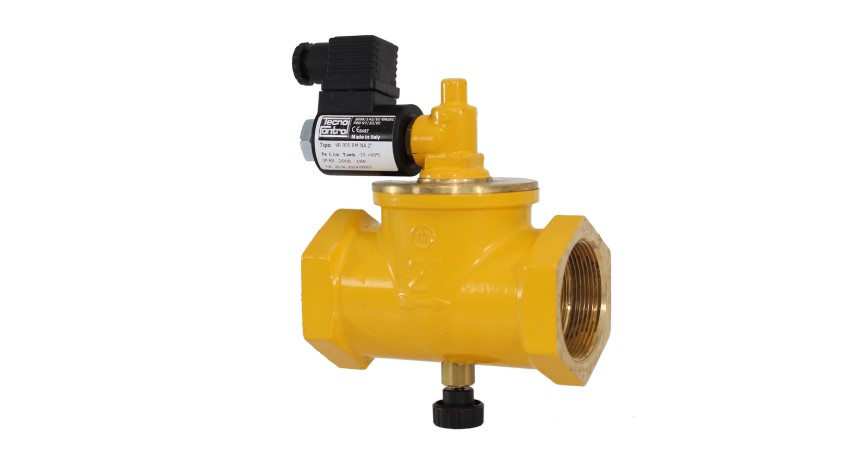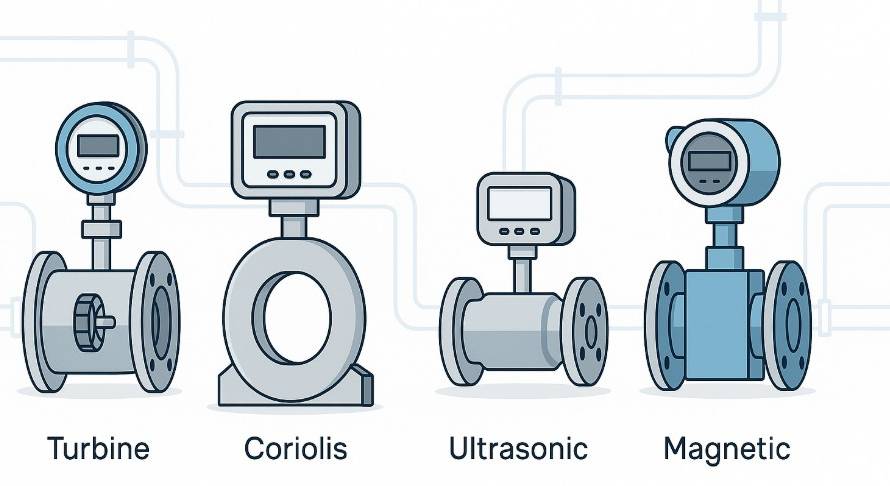Troubleshooting Common Solenoid Valve Issues

Solenoid valves are widely used in industrial automation, fluid control, and HVAC systems, but they can sometimes fail, leading to disruptions in operations. Understanding the common problems and troubleshooting methods can help you resolve issues efficiently and maintain optimal performance.
How Does a Solenoid Valve Work?
A solenoid valve operates by using an electromagnetic coil to control the flow of liquids or gases. When an electrical current passes through the coil, it generates a magnetic field that moves a plunger inside the valve, opening or closing the flow path.
This mechanism makes solenoid valves ideal for precise fluid control in a variety of industries, including water treatment, automotive applications, and industrial machinery.
1. Solenoid Valve Not Opening
Possible Causes:
Power Supply Issues
Insufficient voltage or faulty wiring may prevent the solenoid from activating.
Burnt Coil
Excessive heat or prolonged usage can damage the coil.
Clogged Valve
Dirt, debris, or scale buildup can block the valve’s opening.
Pressure Difference Issue
The system pressure may be too high or too low for the valve to function properly.
Incorrect Valve Type
The solenoid valve selected may not be suitable for the specific application.
Troubleshooting Steps:
- Check the power supply and ensure correct voltage.
- Test the coil with a multimeter; replace it if no continuity is detected.
- Clean the valve thoroughly and remove any obstructions.
- Verify that the inlet and outlet pressures match the valve’s specifications.
- Ensure that the solenoid valve type is appropriate for the intended application.
2. Solenoid Valve Not Closing
Possible Causes:
Worn-Out or Damaged Diaphragm
A torn or stiff diaphragm may prevent closure.
Residual Debris
Small particles may prevent full sealing of the valve.
Magnetized Plunger or Armature
Metal components may accumulate magnetism over time.
Incorrect Installation
Improper mounting or misaligned components can affect functionality.
Spring Failure
The return spring inside the valve may be damaged or weakened.
Troubleshooting Steps:
- Inspect and replace the diaphragm if necessary.
- Flush the valve to remove any trapped debris.
- Demagnetize metal parts if needed or replace them if severely worn.
- Ensure the valve is installed according to the manufacturer’s guidelines.
- Check the return spring and replace it if necessary.
3. Solenoid Valve Making Unusual Noises
Possible Causes:
Loose Internal Components
Vibration or wear can cause parts to move excessively.
Water Hammer Effect
Sudden closure of the valve can create pressure surges.
Voltage Fluctuations
Inconsistent electrical supply can lead to humming or buzzing sounds.
Air Trapped in the System
Bubbles or air pockets may cause irregular noise.
Excessive Coil Vibration
Coil movement can create mechanical noise if not securely mounted.
Troubleshooting Steps:
- Tighten any loose fittings and inspect for worn-out parts.
- Install a water hammer arrestor or slow-closing valve to reduce pressure surges.
- Ensure a stable and correct voltage supply to the solenoid coil.
- Bleed air from the system by allowing fluid to pass through gradually.
- Secure the coil properly to minimize vibrations.
4. Solenoid Valve Leaking
Possible Causes:
Worn Seals or Gaskets
Rubber seals degrade over time, leading to leaks.
Corrosion or Damage to Valve Body
Exposure to harsh chemicals or environments can deteriorate the valve.
Improper Tightening of Components
Loose fittings can allow leaks at the connections.
Incorrect Fluid Compatibility
Some fluids can degrade valve materials faster than others.
Troubleshooting Steps:
- Replace worn-out seals or gaskets with manufacturer-approved replacements.
- Inspect the valve body for signs of corrosion; replace if necessary.
- Ensure all fittings are properly tightened but not over-torqued.
- Verify that the solenoid valve is compatible with the fluid being used.
5. Solenoid Coil Overheating
Possible Causes:
Continuous Operation Without Rest
Excessive duty cycles can overheat the coil.
Incorrect Voltage
Overvoltage can cause excessive heating.
Poor Ventilation
Lack of airflow around the solenoid coil may lead to overheating.
Coil Insulation Breakdown
Over time, coil insulation may degrade, increasing heat buildup.
Troubleshooting Steps:
- Use a coil with the correct duty cycle rating for the application.
- Verify that the power supply matches the coil’s required voltage.
- Ensure proper ventilation and avoid enclosing the coil in a confined space.
- Replace coils with deteriorated insulation to prevent further damage.
Preventive Maintenance Tips for Solenoid Valves
Regular Cleaning
Keep the valve and system clean to prevent blockages.
Check Electrical Connections
Ensure stable voltage and secure wiring.
Inspect for Wear and Tear
Replace diaphragms, seals, and coils as needed.
Monitor Pressure and Flow
Keep the operating conditions within the valve’s specifications.
Use Compatible Fluids
Ensure the fluid passing through the valve does not degrade its components.
Lubricate Moving Parts
If applicable, lubricate valve components to ensure smooth operation.
When to Replace a Solenoid Valve
While solenoid valves can often be repaired, some conditions indicate that replacement is necessary:
- Persistent leaks despite replacing seals and gaskets.
- Recurrent coil failures due to overheating or electrical issues.
- Severe corrosion or damage to the valve body.
- Consistent performance issues affecting system operations.
- High maintenance costs that outweigh the cost of a new valve.
In a Nutshell
By following these troubleshooting steps and maintenance practices, you can ensure that your solenoid valves operate efficiently and reliably, reducing downtime and improving system performance.
Regular inspections and timely repairs will extend the lifespan of your solenoid valves and keep your system running smoothly.



